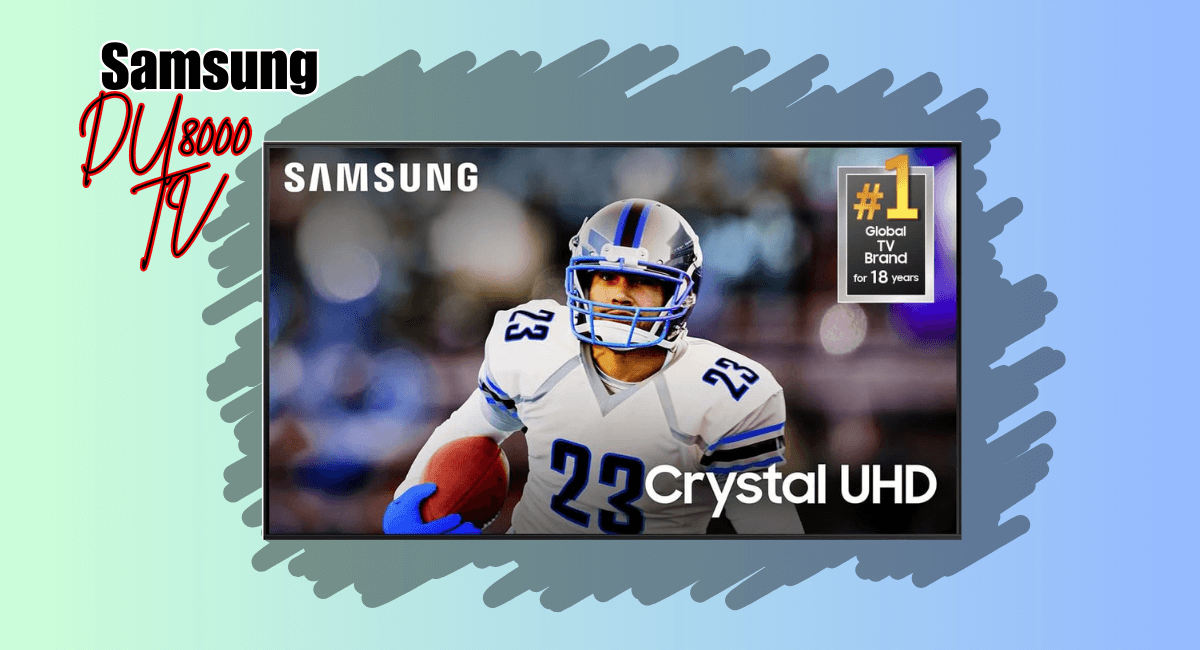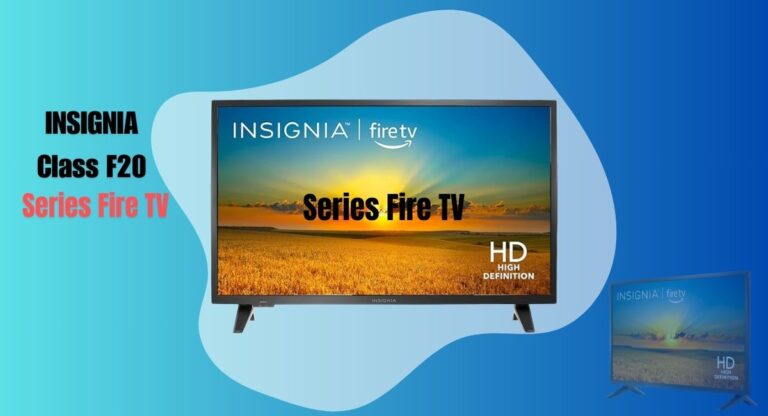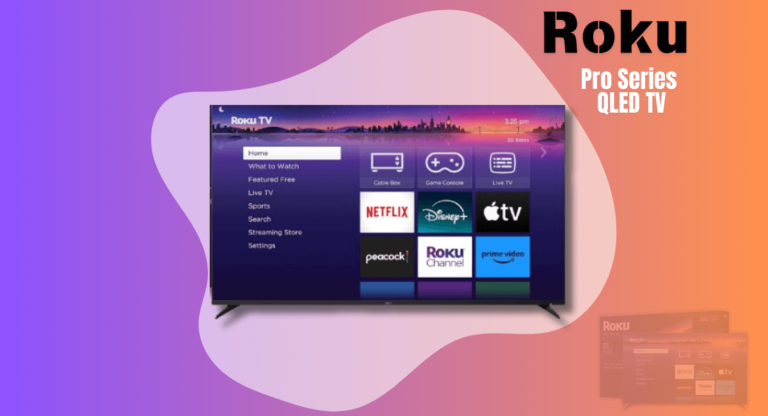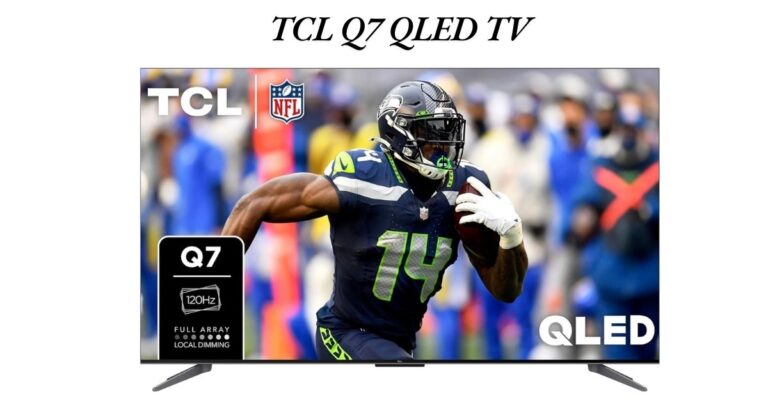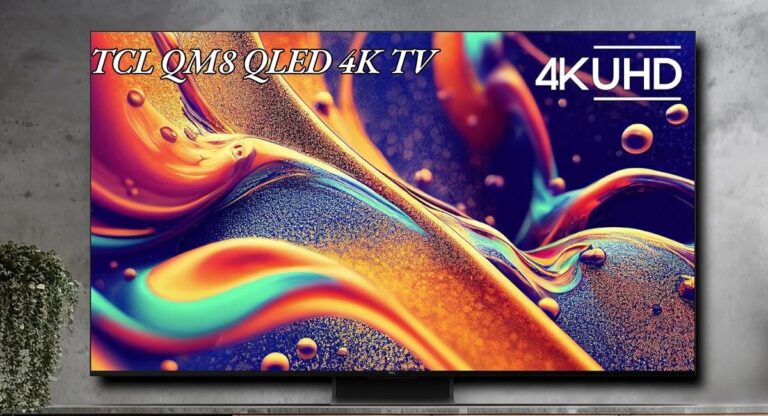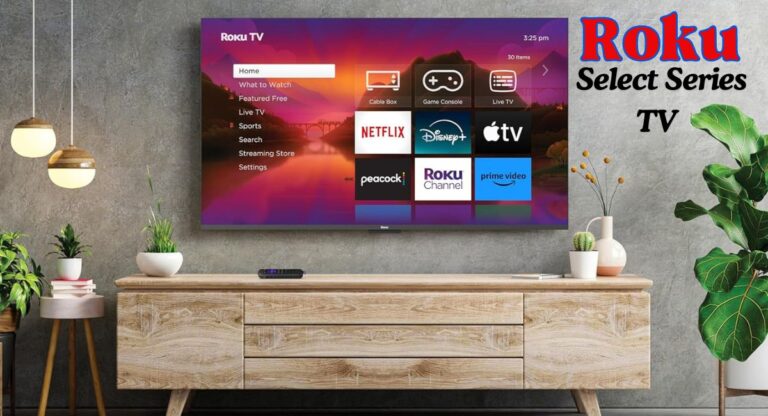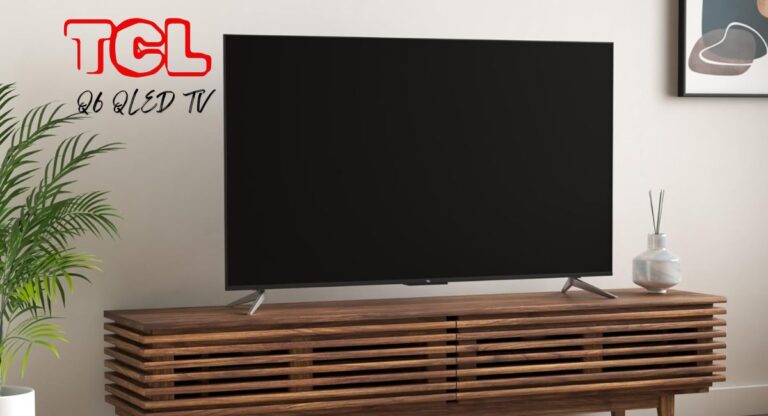Samsung DU8000 TV Review
After some hands-on experience with the Samsung DU8000 TV 65 I am here to give you a practical view on how this less expensive 4K TV actually performs. Picture quality, sound, smart extras, and design – I have thoroughly examined and rated it in all these aspects. If you are interested in how it looks and works in a living room or if it is worth buying, this review will go through all the points. Whether you are replacing your home entertainment or simply looking for decent TV for reasonable cost – the DU8000 may just be the one that delivers.
Reasons to Buy
- Punchy colors
- Intuitive smart TV platform
- Stunning design
Reasons to Avoid
- Poor backlight uniformity
- Thin-sounding audio
- Lacking contrast levels
Design and Aesthetics
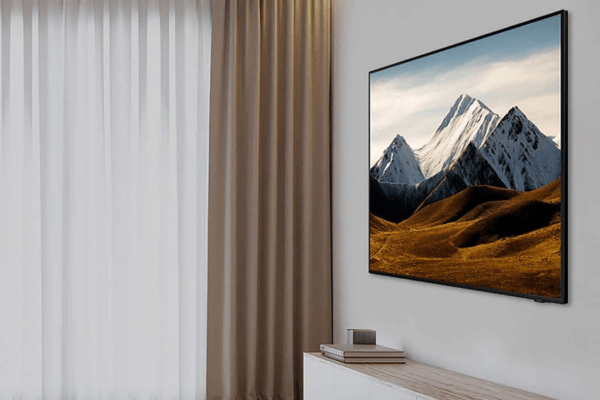
For an entry-level model, the design is nice and fashionable as most models which makes it look even more expensive than one would anticipate. A clean and uncluttered look is enhanced by the low thickness and the three-sided bezels which are less than 1 cm. They are however stronger on the bottom edge which I felt was somewhat too excessive. Overall, this is a low cost model television that still manages to look astonishingly more expensive than reality.
The Samsung DU8000 TV stands on two black plastic legs with a reasonable weight distribution. They are height adjustable which afford you the luxury to lower the screen to reach the table or to lift it up to create room for a sound bar under it. The lower position gives you about 2.1 inches of clearance, which is literally flattening the whole screen down towards the surface of the body. However, this one sort of helps in making the TV look sleeker. There is a more elevated position at 3.07 inches which has enough space for majority of sound bars which means that there’s room for how you arrange your home theater.
As much as the front of the television is legit, the backside is so practical that the aesthetics have no place. The rear cover is all made of plastic with horizontal etchings that serve more to create a texture than for beauty purposes. The ports are set a little deeper into the body which is not inconvenient in itself but will be if you armor the television on the wall. This type of design is not uncommon with the types of TVs that cost this low, but it does mean that if you are going to attach the TV on the wall, then prepare yourself for the war of your cables.
Speaking of hiding them, you may also use a cable management clip and hook it on any of the clips to attach them to TV feet stability. Around the TV this is a helpful feature as it helps reduce clutter and eliminates the risk of cable tangling.
The bezels surrounding the viewing area are rather thin as they are sized at only 0.35 inches (0.9cm). This is beneficial in further improving the aesthetic value of the TV and enhancing the feeling of immersion since the pictures will not be encumbered by the frame. The max thickness of the TV is thin, only 1.02 inches, and thus if you choose to mount it onto the wall, it still looks sleek. In addition to that, it is also possible to use a VESA 400×300 wall mount on the TV, which is usually included in most systems.
With regards to styling and design features, this Samsung DU8000 TV was noted to be quite okay. It provides all features at a slender and sleek design, with the likes of adjustable feet and cable concealed. At the posterior side, there is cheap plastic used and superior materials are non-existent, at the other hand the frontal view faceplate is simple and elegant which raises the level of sophistication of the television while on its stand. In case you are looking for a flat-screen television which does not only provide graphical entertainment but is also pleasing to the eye, then this model is the one for you.
Materials and Build Quality
The Samsung DU8000 TV is rather disappointing in terms of build quality compared to other big brands like LG G3 OLED TV and VIZIO VFD40M-08. Wide range of people may own this tv, so of course it does not feel cheap, but on the other hand, it does not feel that premium as one would expect from this kind of latest technology. There is some rocking motion when going from the front to back orientation, but this went away quickly. However, this wobble is worth noting if you want to keep it in a high impact area where it can be knocked around, even if under normal situations it is not a very big problem.
One thing that stands out is the flex on the back of the TV especially around the VESA mounting. This is another area where the TV feels somewhat flimsy. Never mind that even with all that in place, and even attached properly, you can feel that flex, which is rather redundant. It is a little annoying, but whether you like it or not, most modern TVs feature this for better or worse.
Still another concern is how wide the area is where the border meets the screen. This gap does not seem to be a big problem at first glance, however, it does cause some issues for long-term usage. And however, if dust or some dirt gets trapped in that gap, it can become quite irritating overtime. While we do not know if this gaping gap is something peculiar to our unit or an endemic problem to this unit, it is certainly worth paying particular attention to.
On a more positive note ex- which is a perfectly fitting way to describe if in spite of these problems there is a feeling that the TV is built in a too fragile manner. It is reasonably quite comfortable to lift it up and fix it on a wall but then again there is a feeling that some shortcuts were made to reduce the expenses. The modern design is rather simple without any extravagance or detraction in the verticality but then at some distance from its profile, it seems to be an attractive slim fitting design but when you come closer there is a noticeable plastic at the frame and some of the build aspects.
The construction of Samsung DU8000 TV is adequate, which is what most users might expect, however, it will not excite anyone. It is self-explanatory in the functionality that it serves though if you are looking to get a TV that gives off the same hard impression on the surface as it appears on the outside, this may not be an achievement. It is ideal in cases where users want all the performance and features without seeking the high-end physical design.
Picture Quality

Most users would think that the picture quality of the Samsung 65” TV is relatively alright, however there are a few very important setbacks especially for those desperate for the best. The contrast ratio is quite impressive at 5,435:1 which would however bring out the blacks in dark lit scenes.
Again, this television does not equip a local dimming feature, which is normally applied to a full viewing screen in order to enhance contrast levels. Therefore, although the view of the dark scenes is pleasant, the facts that blacks can be quite overcooked when bright highlights also appear on the screen in the same frame, this is such that goes ‘come on that black is. It is mainly noticed in cases when wide ranges between the brightest and the darkest parts of the picture occur.
The picture quality of this model is very similar to Samsung AU8000 TV and Samsung CU8000 TV.
Since there is no local dimming, one cannot experience the notorious ‘blooming’ phenomenon, which is an unwanted transfer of brightness on dark areas of the screen. People who have had problems with blooming on other televisions by Panasonic may appreciate the fact that there is no such is the case here. However, since it is an edge-lit TV, the ‘boosting’ of brightness or contrast is limited to overriding bright spots, not areas that cover that specific region of the screen. This affects the television picture quality since the brightness rays cannot be correctly aligned for fast-paced movements on the screen.
In terms of HDR performance, this is not the best TV one can get but better than Samsung TU8000 TV. Add to that its HDR brightness which just falls short of bringing out the true highlights and instead leaves the HDR content its supposed to make impact with, looking dull. And even in Game Mode, the brightness still doesn’t tend to increase very much, meaning some HDR wonderful feeling games, may not look as good as what was intended. For a gamer or one who loves watching HDR content, the void in brightness can feel disappointing at times, especially when such energetic and vibrant scenes are played out.
Nonetheless, PQ EOTF tracking (which is related to the how good the TV is in showing different brightness levels – towards the TV with the best screen) has good figures but issues with shadow rendering and midtonal content are present. Blacks and dark shades are usually a little lifted, and thus, some of the darker portions do not rest as dark as they should. There is also a little roll-off when one engages with the 600 nits content or the 1000 high nit so that bright highlights actually lose some detail as well in very bright pictured scenes. If one is using 4000 nits content, the TV makes some effort in holding some of the details, however, this is still not appropriate for high-end HDR content. You only have a limited view of the TV’s options, however, it does even support HDR Tone Mapping fine-tuning to ‘Active’ which will help cure the age-old similar HDR scenario by brightening the overall image.
However, it is possible to decrease the parameters of accuracy for increasing the brightness of the overall image of the TV, setting HDR Tone Mapping into ‘Active’ – which is something that the TV displays. In Movie Mode, the level of contrast increases over time increasing the movie mode, so excessive detail is retained from clipping zone and highlights but in Game Mode, it’s more dynamic and supports clipping bright areas.
The same can be said about their color reproduction performance. The color volume is quite acceptable, especially bearing in mind the color space DCI-P3 used for almost all modern digital media. However, certain colors, especially red, yellow, green and cyan, tend to be slightly lacking in saturation. In terms of these colors, the low and dull versions tend to suffer in fact. The TV performs even worse within the Rec.2020 color space which is gaining wider acceptability and therefore colors in this space tend to deviate from the actual performance level.
The handling of reflections of the TV is not bad, particularly the ones that are less direct, such as the window glare. However, if the screen is parallel to the light source, for example in a bright room the viewer will have an easier perception of reflections and any glaring spots which can interfere with viewing.
One positive thing is the inability to smooth out the blur effects of low-quality content. Well, while it is sometimes helpful in preserving details, the TV completely fails to eliminate image artifacts, which are quite bothersome when watching low-res videos. That is even more weird as last year Samsung DU8000 TV managed to do this better than this so there is also a likelihood that slipped in some bug or its software for DU8000 has some problem that needs fixing.
All in all, if you are not an overly fussy viewer and tend to watch movies in the dark, the picture quality of the Samsung television will suffice. All one can complain about is the absence of local dimming, not high enough HDR peak brightness and some color inaccuracies. However, the picture is not that great for those who follow picture quality closely. This is not to say that you will be unhappy with the performance of this television, however if you are expecting a more demanding performance you may want to look for add-ons like soundbars or external speakers.
Sound Quality
The Samsung DU8000 TV suffers in sound quality relatively, some functions that are used in the television lacks perfection but still better than the LG UR9000 TV. At a medium range of volumes, the audio is pleasing as it meets requirements in that area such as high quality sound during normal TV shows or less strenuous movies. But then as soon as one starts increasing the volume, the sound experience goes down by a large extent. Apart from the buzz that exists, when one puts the volume all the way up, the sound is not that banging anyway and it starts sounding so bad. Those who want to watch the TV in a more silent manner will be in likelihood of fulfillment, but in more noisy situations the sound quality may diminish more rapidly.
One other disadvantage is the bass. Just like other flat screen TV models, this one also cannot reproduce any such low frequencies unlike VIZIO M50QXM-K01 M-Series Quantum X. Thus, there is likely to be a deficiency in bass for very heavy bass musical content 126.99 Hz is deductively the low frequency extension. This is bad especially for action movies for those who watch them, music, or shows where sound acts as a major boost to the performance. And for those who like those low ear shaking booming sounds, and want the television in the flat screen variety, the addition of a soundbar or a surrounder speaker system will be worth it.
The maximum volume of the TV is labeled at around 86.2 dB SPL which is usually not considered too loud and it feels like the hit sounds get quite compressed at the higher volumes. There is dynamic range compression of around 4.27 dB which in effect limits the difference which should exist between the softest and loudest sounds. This means that when you are playing back materials at high volume, the sound produced becomes more or less monotonous. The same factor plays a role with the audio which even becomes more and more distorted at the max level. The performance of distortion is quite apparent. Distortion at lower volume levels never gets to that stage of distressing, but as you change the levels to higher ranges, very little is done to sustain that quality even at low levels.
The overall level of THD (Total Harmonic Distortion), whereby harmonic distortion threshold value defines how well the sound reproduction is worth, shows approximately 0.292. That is not so good, but is acceptable at peak. However, when the max volume of the device is engaged, the THD value rises to 0.823. That means the sound has become inaccurate and less clear. For similar reasons, IMD (Intermodulation Distortion) which shows how the TV deals with complex signals is expected to improve with low sound levels. The 80dB IMD is stated to be 10.79 percent but reaching the max this figure jumps to 12.93 percent. This is indicative that the TV has problems in resolving complex sounds which are dynamic and have many layers when the volume is turned up.
The sound experience is reasonable enough when one is viewing average television shows or movie pictures for which regular sound levels could be applied. The TV does have the speech and sound quality to an acceptable limit, but those who are craving for deep bass and high volume levels without any distortion will have to invest in a sound bar or sound system.
Smart Features
The intelligent functions of this Samsung DU8000 TV are quite well balanced, yet some of them are limited given the scaled down features of 2024 version of Tizen Os. The shopping interface is user friendly and in spite of its features being absolutely primitive to what you’d expect in high end units, overall the experience is quite pleasant. While doing primary things like switching between the applications and adjusting the settings, they are moderately fast. For instance, it takes about 2 seconds to choose YouTube and about 5 seconds to switch the backlight options, which seems fine but tolerable.
The TV has a lot of other capabilities, so if you are the kind who likes to play with the options you should not feel confined. Still, one should take into consideration that features such as TV to Mobile or Ambient Mode+ are not available which some familiar or fond with other Samsung models might consider a disadvantage. Liking this, he does have Samsung’s Multi View which is really cool when watching more than one source at a time.
Regarding advertisements, they can be found on the main page, and unfortunately, they cannot be completely ignored. You can opt out of ads, but the suggested clips will still appear on the screen the same way. For those who prefer simplicity and cleanliness this may come off as a little bit irritating and sadly this is rather common now with smart TVs.
Selecting apps is probably one of the greatest advantages of this TV like Roku Select Series 4K TV and INSIGNIA Class F20 Series Fire TV. Not only within Samsung’s app store will you find Netflix and YouTube, but you can also expect plenty of additional apps with streaming services. As for the apps themselves, they work well, yet the app’s general smoothness is rather mediocre hence you may experience short lags or pauses once in a while.
Transferring pictures and videos from your phone is not difficult as the large TV is casting supported and even the play back of a USB drive is supported including HDR play back which is good when watching films or programs that have been downloaded. For those who love to binge watch, the TV comes equipped with HDR support on Netflix and youtube for an enhanced viewing experience.
The remote is nothing new and is standard on the Samsung DU8000 TV and even in the other 2023 models. It has been kept simple with some hard keys for popular streaming platforms. Most importantly, it has a rechargeable remote battery and even charges via a USB type C port or through solar power which is great. The voice control options are pretty good with support for Bixby and Alexa, and it can be used to change volume and settings, switch inputs, and even answer some simple questions. Nevertheless, one cannot search for content on the app since it would have been a good feature to use.
If you are worried about power consumption then the energy consume by the TV is 64 watts during its normal operation and about 154 watts at its peak which is average for this dimension. The hardware/software revisions might change depending on the region or in this case firmware version at launch 1044 so pretty much all the scope of the deleviry up to date with new improvements.
Nonetheless, the smart applications suit the users without any con expectancy rather than the comprize of features for which most such products possess to advertise. For those of you who appreciate having different applications and good voice capabilities for controlling the TV – this one works very well.
Connectivity and Usability Ratings 80/100
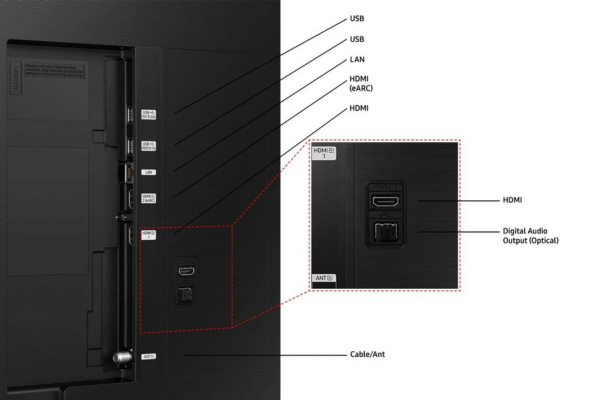
The Samsung DU8000 TV’s connectivity options are decent but there are a few shortcomings as well. It offers support for HDR10, HDR10+ and HLG, which means that watching range of HDR content should not be an issue with good contrast and brightness. But it does not support Dolby vision, which is a more advanced version of HDR and provides even better colors and dynamic range. This may be a disadvantage in the eyes of those who want the best HDR formats supported by the TV set.
The TV features three HDMI ports that have HDMI 2.0 full bandwidth capability. This is sufficient for most users in that it enables 4K up to 60 FPS a refresh rate which is good for watching sports or playing games. But if you are gunning for HDMI 2.1 bandwidth that will enable a 4K 120 FPS for instance for next generation gaming consoles or for smooth motions, this model does not offer this except the 85 inch version that comes with certain HDMI 2.1 ports. The lack of HDMI 2.1 may limit your options during the sale especially in future imagining fast moving contents or high tech games.
Another plus is the CEC (Consumer Electronics Control) support, which makes it easier to control multiple devices with a single remote. It also supports HDCP 2.2 for content protection on all HDMI ports so that any connectivity issues will not hinder the quality of the stream. There’s an ATSC 1.0 tuner for over-the-air broadcast TV, but the mention of the more advanced ATSC 3.0 standard, which may be able to offer higher quality broadcasts in the future, is notably absent.
As for the audio part, it has eARC (enhanced Audio Return Channel) that allows passing the uncompressed audio like Dolby Atmos to a soundbar or a receiver. Nevertheless, notice that it is DTS format shy, which many users should keep in mind in case they watch lots of Blu-rays because that is an audio format commonly used in that kind of content.
Regarding the physical ports, there are two USB 2.0 ports which are adequate for simple USB peripheral but these are quite slow compared to a USB 3.0. There’s also one Ethernet port, but no display port, analog audio out or component/composite in options may leave some older devices on the bench.
Wi-Fi is well supported with the options of both 2.4 GHz and 5 GHz bands helping in faster streaming through the home network. Although it is a good TV, it still lacks some advanced audio connection options such as Variable Analog Audio Out which can be a letdown for sound critics.
For the basic users, the connectivity features are expected to be okay, especially streaming and simple home theater systems. For an ardent gamer or someone looking for the best available in audio-video technology, these may seem to be very slight constraints.
Final Verdict
After spending some quality time with the Samsung DU8000 65″ TV, I can confidently say it’s an impressive piece of tech for its price. The 4K Ultra HD resolution delivers a crisp and vibrant picture, and the Crystal Processor 4K does a great job upscaling lower-resolution content. The Dynamic Crystal Color technology really shines, offering rich colors that make movies and shows pop. HDR performance is solid, especially with HDR10+, providing noticeable depth in contrast and brightness.
However, if you’re a hardcore gamer, the 60Hz refresh rate might feel a bit limiting, especially for fast-paced gaming. But for casual gamers, the Auto Low Latency Mode (ALLM) does help reduce input lag, making it a decent option for most gaming experiences.
The Tizen operating system is responsive and easy to navigate, offering a wide range of streaming services with built-in support for Bixby, Alexa, and Google Assistant. Audio performance, though clear with Dolby Digital Plus, could use more punch, especially for bass-heavy content. I’d recommend a soundbar to complement the experience.
Setup was straightforward, and the slim design fits seamlessly into any modern living room. The build quality is sturdy, and the VESA compatibility makes wall mounting easy.
In short, if you’re looking for a TV that offers great picture quality, smart features, and a sleek design, the Samsung DU8000 65″ is an excellent option, especially for home entertainment enthusiasts who enjoy movies, TV shows, and casual gaming. For the price, it delivers fantastic value.

